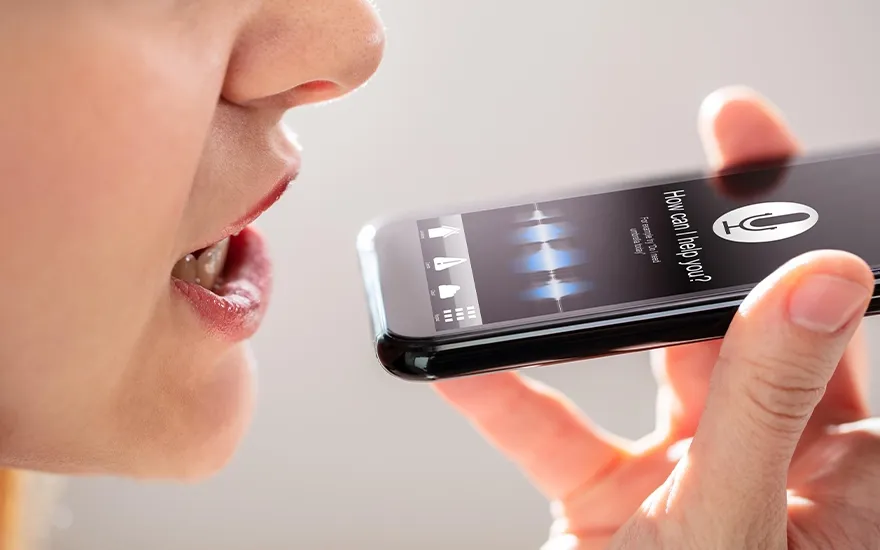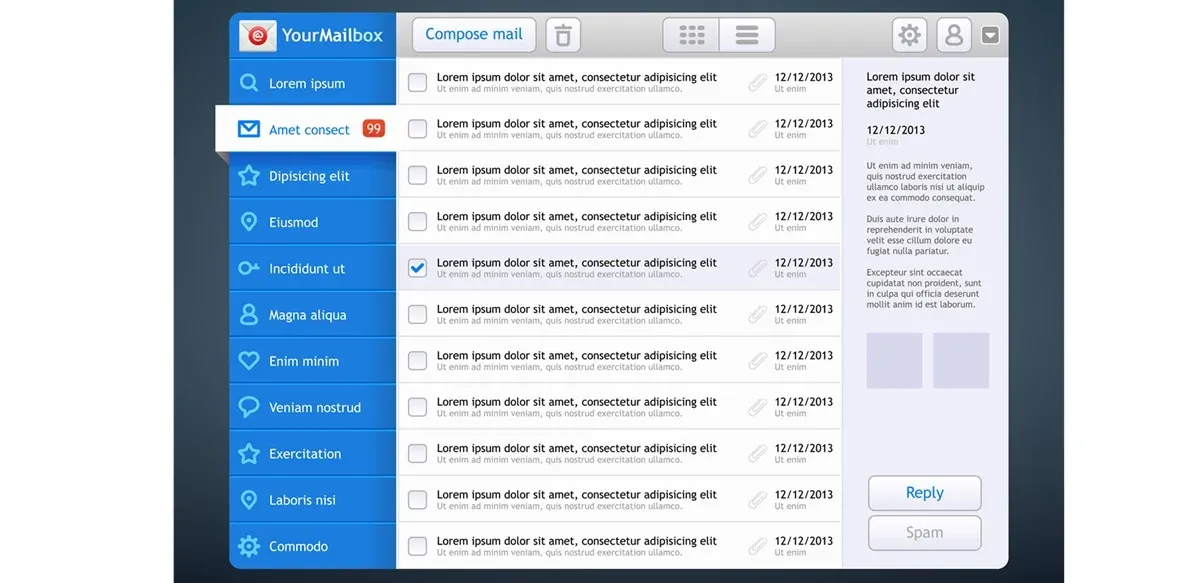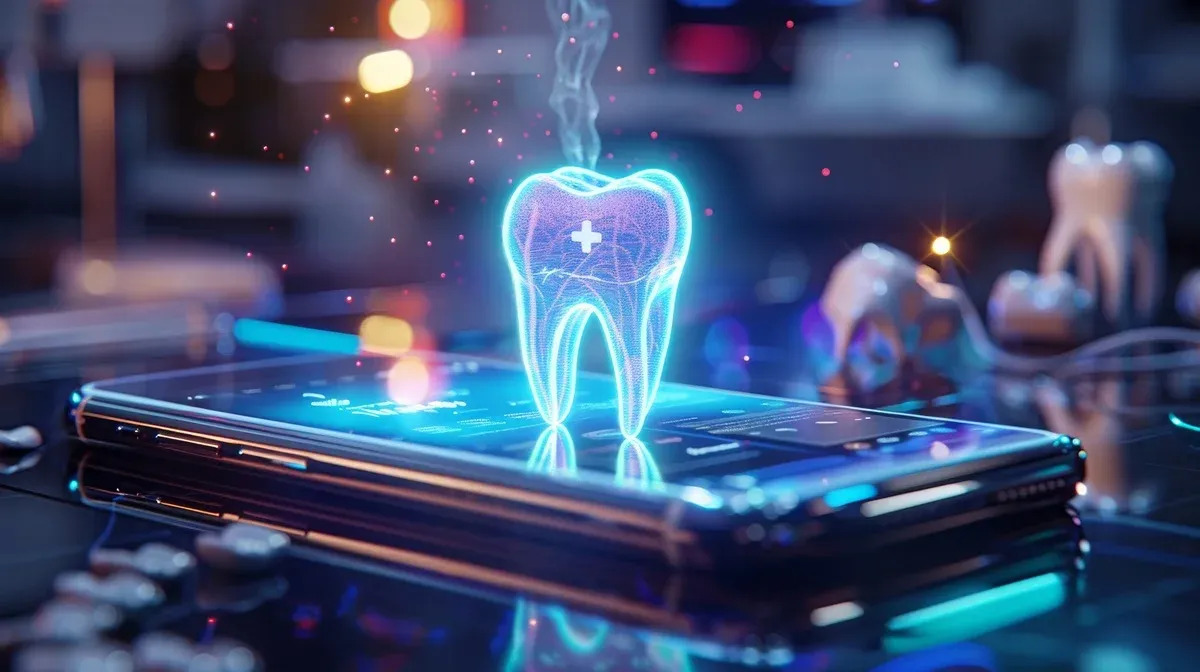Oct 21, 2025

12 Strategies for Dentists to Win Patients Through Voice Search in the “Hey Google” Era

In today’s rapidly evolving digital world, patients no longer just type queries into search bars they speak them. From “Hey Google, where is the best dentist near me?” to “Siri, find a dental clinic open now,” voice search has become an essential part of how patients discover healthcare providers. For dentists, this shift marks a defining moment in dental marketing voice search strategies.
Studies predict that by 2026, so much healthcare-related searches will occur through voice assistants like Google Assistant, Alexa, and Siri. This evolution demands a new approach one that prioritizes conversational SEO for dentists, local intent optimization, and patient-centered content. Optimizing for voice means understanding how people naturally speak and search when urgency, comfort, or fear drive their queries.
This blog explores strategic approaches for dentists to thrive in this new landscape. From FAQ schema optimization to long-tail voice keywords, it reveals how clinics can adapt to the Google dental search era while maintaining trust, accuracy, and accessibility.
Understanding How Google Transforms the Dental Patient Journey and Search Behavior
Unlike typed searches, voice queries are longer, conversational, and intent-driven. A patient might say, “Hey Google, who’s the best dentist near me for teeth whitening?” rather than simply typing “teeth whitening dentist.” These differences are subtle but powerful. Voice search dental SEO is not about ranking for keywords it’s about matching patient intent and capturing micro-moments.
Why Dentists Must Adapt to the New Age of Conversational, Patient-Focused Voice Queries
As voice interactions grow, zero-click searches are becoming more common. That means patients often get their answers directly from Google Assistant or Apple HomePod, without ever visiting a website. To stay visible, dentists must align their content with structured data markup and ensure accurate Google Business Profile listings. This isn’t optional anymore it’s essential to maintain visibility in a world of quick answers and smart speakers.
Voice-Optimized Dental Presence Rooted in Patient Intent and Local Trust
Winning at voice search trends 2026 starts with trust and local accuracy. Voice assistants rely heavily on location and reviews. Practices with updated hours, strong ratings, and clear descriptions have a higher chance of appearing in local voice search results. The goal is not just visibility it’s reliability.
FAQS
1. How can dentists optimize their websites for voice search in 2026
Dentists can optimize for voice search by using conversational SEO techniques and long-tail voice keywords that reflect how patients speak naturally. Implementing FAQ schema optimization, updating the Google Business Profile increases visibility in voice search for dentists results.
2. Why is voice search dental SEO becoming important for modern practices
With more patients asking devices like Google Assistant, Alexa, and Siri for quick dental information, voice search dental SEO helps practices appear in those spoken results. By focusing on natural language dental search and structured data markup, dentists can connect with patients in real-time moments of need.
3. What types of voice commands do patients use to find dental clinics
Common patient phrases include “Dentist near me open now,” “Hey Google, where’s the best dentist in USA?” or “Alexa, schedule a dental appointment.” These smart speaker dental queries explain intent-driven behavior, so optimizing for local voice search and micro-moments in dental care is essential.
4. How do long-tail voice keywords improve visibility for dentists
Long-tail voice keywords mimic how patients naturally speak for example, “How can I fix a chipped tooth?” They’re crucial for dentists voice assistant optimization because they capture patient intent and improve ranking for specific, high-conversion voice queries related to dental services.
5. What role does structure data play in voice search optimization
Structured data especially Schema.org FAQ helps Google Assistant and Siri understand your content. By tagging pages with accurate schema, dentists improve their chances of being featured as direct spoken answers in zero-click searches, boosting both credibility and discoverability.
“True innovation in healthcare marketing lies not in chasing algorithms, but in designing digital experiences that echo empathy, ethics, and patient intent.”
This mindset transitions us from understanding voice technology to mastering it through structured, actionable strategies designed for 2026 and beyond.
 Trends of voice search in 2026
Trends of voice search in 2026
The latest voice search trends 2026 indicate a steady rise in hands-free, AI-assisted dental searches across smart speakers and mobile devices. Patients now trust voice assistants for everything from booking appointments to understanding insurance coverage. Dentists optimizing for Siri and Alexa get benefit by better discoverability on platforms like Amazon Echo and Apple HomePod.
Simplify, Localize, Personalize
Voice optimization isn’t complex it’s conversational. Start by simplifying language, emphasizing patient intent, and maintaining a local focus. Your website should clearly reflect what patients ask through voice, hours, services, and location.
Actionable Steps
- Create a dedicated FAQ page using Schema.org FAQ.
- Optimize your Google Business Profile with consistent NAP data.
- Use conversational keywords like “best family dentist near me open now.”
- Ensure your site loads fast and is mobile-first to support voice UX.
Strengthen Conversational SEO for Dentists
Voice optimization thrives on natural speech patterns. Instead of short, keyword-heavy content, dentists should publish answers to real questions patients might ask aloud. Phrases like “What is voice SEO in healthcare?” or “Why do dentists need voice search marketing?” leads relevance to smart speaker dental queries.
Blogs, Q&A videos, and patient education snippets help voice assistants extract direct, trustworthy answers. This also builds semantic authority, ensuring your practice stays visible across multiple voice-enabled devices.
How Integrating Long-Tail Keywords and Local Schema Builds Authentic Patient Connections Online
Integrating long-tail voice keywords like “Hey Google, how can I fix a broken tooth?” allows your content to resonate with natural patient conversations. Combined with structured data markup, this approach enhances visibility across zero-click searches and local voice search for dentists.
Use Schema.org FAQ and rich snippets to give Google and Siri precise data. This boosts your chance of being featured as the direct spoken answer. More importantly, it shows patients you understand their needs before they even step into your clinic.
Leading with Ethics, Adaptability, and Patient-Centered Innovation in the “Hey Google” Era
The future of dental marketing voice search lies in blending innovation with authenticity. Dentists who focus on understanding their patients’ intent how they speak, search, and decide gain a long-term advantage.
As technology evolves, ethical marketing practices and transparent communication become even more critical. Every “Hey Google” interaction represents a moment of trust an opportunity to guide someone toward better oral health. When optimized correctly, voice search dental SEO does more than drive traffic it strengthens relationships through clarity and empathy.
If your practice is ready to prepare for voice search trends 2026, now is the time to refine your strategy. Focus on building genuine, voice-optimized experiences that speak your patients’ language.
Resource:
Voice Search Optimization & Web Design: Building for the Future
Learn more about digital marketing in your field through our blogs































































































































































